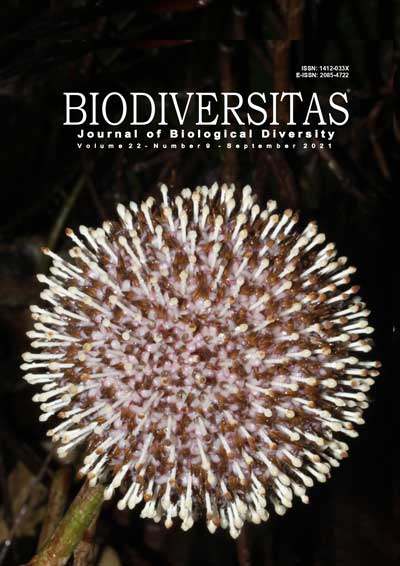Comparison of four species diversity indices in mangrove community
##plugins.themes.bootstrap3.article.main##
Abstract
Abstract. Mulya H, Santosa Y, Hilwan I. 2021. Comparison of four species diversity indices in mangrove community. Biodiversitas 22: 3648-3655. Mangrove communities have a tidal environment that affects their species composition, which may be finite but the abundance may vary between species individuals. Many ecologists have used indices to measure species diversity without knowing the best suitable index for the community and its statistical characteristics. Therefore, this study aimed to compare species diversity indices in mangrove communities to obtain the best and most appropriate index for mangrove diversity. The comparison was done using the Simpson (1-D), Shannon, Menhinick, and Margalef indices, which were widely used and considered the best measures in various communities. The data was obtained from the field sampling using a single plot of 80×40 m2, and then it was simulated to obtain standardized variables so that the indices got the same treatment. It was calculated with descriptive statistics and species diversity indices among other Simpson, Margalef, Shannon, and Menhinick indices. Pearson correlation and UPGMA cluster were used to get conformity based on the best index criteria. The results showed the Margalef index was the best in performance that passed the assessment criteria more than Simpson (1-D), Shannon, and Menhinick index. It had a low correlation with sample variance and normality marker but had high variability of the index value. It was also sensitive to the number of species, good reduced individual sample, and good correlation with similar indices. Thus, we concluded that the Margalef index was the best index for mangrove community diversity measurement. The index was recommended for monitoring and evaluating the species diversity assessment for the mangrove community. It should not use several species diversity indices with similar meaning.
